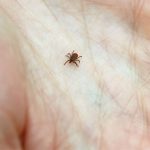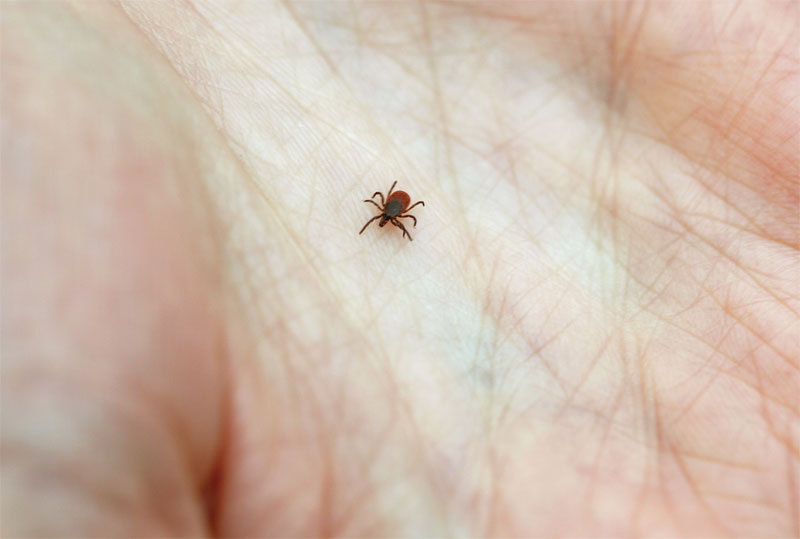 A blood-sucking parasite that may carry disease to humans as well as other animals.
A blood-sucking parasite that may carry disease to humans as well as other animals.
A tiny parasite which sucks blood from the skin.
Blood-sucking para site, some species of which cause diseases in humans, including Lyme disease. Rocky Mountain spotted fever, and tularemia.
A bloodsucking parasite belonging to the order of arthropods (Acarina) that also includes the mites. Tick bites can cause serious skin lesions and occasionally paralysis, and certain tick species transmit typhus and relapsing fever. Dimethyl phthalate is used as a tick repellent. There are two families: Argasidae (soft ticks), including Ornithodoros, with mouthparts invisible from above and no hard shield (scutum) on the dorsal surface; and Ixodidae (hard ticks), including Dermacentor, Haemaphysalis, and Rhipicephalus, with clearly visible mouthparts and a definite scutum.
Ticks are blood-sucking arthropods which are responsible for transmitting a wide range of diseases to humans, including rocky mountain spotted fever, African tick typhus, lyme disease and fievre boutonneuse. Apart from being transmitters of disease, they cause intense itching and may cause quite severe lesions of the skin. The best repellents are dimethyl phthalate and diethyltoluamide. Once bitten, relief from the itching is obtained from the application of calamine lotion. Tick-bites are an occupational hazard of shepherds and gamekeepers.
Any of the numerous bloodsucking arthropods of the order Acarida. Ixodidae is the hard tick family and Argasidae the soft. Ticks transmit many diseases to humans and animals.
A common term for various blood-feeding parasites.
